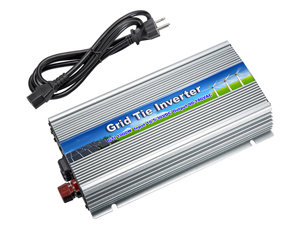 The solar power inverter is the core equipment of the photovoltaic system. Its main function is to convert the direct current from the photovoltaic modules into alternating current that meets the requirements of the grid. As a power electronic device, inverters, like all electronic products, face challenges brought about by temperature. In all electronic product failure cases, up to 55% of them are caused by temperature. The electronic components inside the inverter are also very sensitive to temperature. According to the 10-degree rule of reliability theory, from room temperature, the service life is halved for every 10-degree increase in temperature, so the heat dissipation of the solar inverter is very important.
The solar power inverter is the core equipment of the photovoltaic system. Its main function is to convert the direct current from the photovoltaic modules into alternating current that meets the requirements of the grid. As a power electronic device, inverters, like all electronic products, face challenges brought about by temperature. In all electronic product failure cases, up to 55% of them are caused by temperature. The electronic components inside the inverter are also very sensitive to temperature. According to the 10-degree rule of reliability theory, from room temperature, the service life is halved for every 10-degree increase in temperature, so the heat dissipation of the solar inverter is very important.
The solar inverter heat dissipation system mainly includes radiators, cooling fans, thermal grease and other materials. At present, there are two main heat dissipation methods for solar inverters, including free cooling and forced air cooling.
Free cooling
Free cooling refers to the realization of heat dissipation from local heating devices to the surrounding environment to achieve the purpose of temperature control without using any external auxiliary energy, which usually includes three main heat transfer methods: heat conduction, convection and radiation. Convection is the main method. Free heat dissipation or cooling is often suitable for low-power devices and components that do not require high temperature control, the heat flow density of the device is not high, and the sealed or densely assembled devices that are not suitable for other cooling technologies.
Forced air cooling
Forced air cooling is mainly a method of forcing the air around the device to flow by means of a fan, so as to take away the heat emitted by the device. This method is a simple and effective heat dissipation method. This cooling method is best used if the space between components within the part is suitable for air flow or for the installation of local heat sinks. The method of improving the forced convection heat transfer capacity increases the heat dissipation area and generates a relatively large forced convection heat transfer coefficient on the heat dissipation surface. Increasing the heat dissipation area on the surface of the radiator to enhance the heat dissipation of electronic components has been widely used in practical engineering.
Free cooling vs. forced air cooling
Free heat dissipation has no fan, low noise, but low efficiency, which is generally used for low-power inverters. Forced air cooling needs to be equipped with a fan, which is noisy but has a fast heat dissipation speed. It is generally used for high-power inverters.
Through the comparison experiment of the heat dissipation capacity of string inverters, it is found that the heat dissipation effect of forced air cooling is better than that of natural cooling mode of string inverters with a power level of 50kW or above. The temperature is lowered by about 20℃, which can ensure the long-life and high-efficiency operation of the inverter. The temperature of the inverter using the natural cooling method increases, and the life of the components is reduced.
